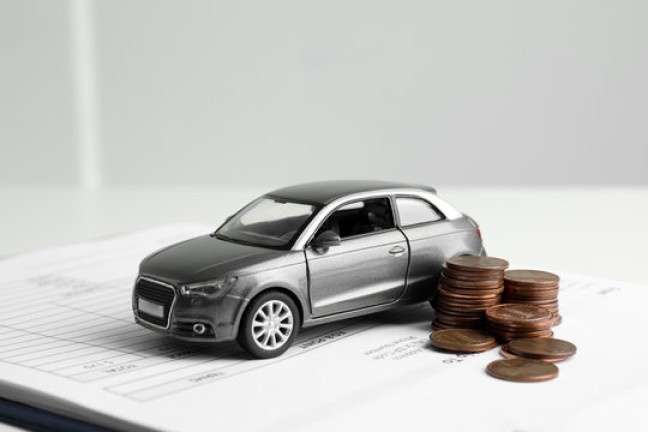When it comes to financing a car in the Australian Capital Territory (ACT), understanding the details can save you time, money, and frustration. With many options available, choosing the right one requires careful consideration. In this guide, I will share what I’ve learned about ACT car finance, including how it works, the costs involved, and how to choose the best option for your situation. By the end of this article, you’ll have a clear roadmap to make informed decisions.
Table of Contents
What Is Car Finance?
Car finance is a way to borrow money to purchase a car. Instead of paying the full price upfront, you spread the cost over a fixed period by making regular payments. The loan typically includes interest and fees, which add to the overall cost. While this means you’ll pay more than the car’s original price, financing allows you to access a vehicle you might not otherwise afford.
Types of Car Finance in the ACT
There are several types of car finance available. Each has unique features and benefits, so understanding these is key to making the right choice.
1. Car Loans: A car loan is a common choice for financing a vehicle. You borrow a specific amount from a lender and repay it in fixed installments over a set term. Interest rates can be fixed or variable. Fixed rates provide stability, while variable rates may fluctuate.
Example Calculation: Suppose you borrow $30,000 for a car loan with a fixed interest rate of 7% over five years. Here’s how your repayment could look:
| Loan Amount | Interest Rate | Loan Term | Monthly Repayment | Total Repayment | Interest Paid |
|---|---|---|---|---|---|
| $30,000 | 7% | 5 years | $594.04 | $35,642.40 | $5,642.40 |
2. Lease Agreements: A car lease is an arrangement where you rent a vehicle for a set period. You make monthly payments, and at the end of the lease term, you can return the car, buy it, or lease another vehicle. Leases are typically used for new cars.
3. Novated Leases: This option is popular with employees. Your employer deducts lease payments from your pre-tax income, reducing your taxable salary. It’s an attractive option if your employer offers this benefit.
4. Hire Purchase: With hire purchase, you hire the car and make regular payments. Ownership transfers to you once the final payment is made. This option often comes with higher interest rates but is straightforward in terms of ownership transfer.
5. Personal Loans: A personal loan can also finance a car. These loans may not be secured against the vehicle, meaning higher interest rates. However, they offer flexibility if you’re buying an older or less expensive car.
How to Compare Car Finance Options
Comparing car finance options involves understanding the total cost, flexibility, and terms. Here’s how I approach it:
1. Total Cost of Finance: The total cost includes the principal, interest, and fees. A lower interest rate doesn’t always mean a cheaper loan if fees are high. Compare loans using the comparison rate, which includes interest and most fees.
| Lender | Interest Rate | Comparison Rate | Monthly Payment | Total Cost |
|---|---|---|---|---|
| Lender A | 6.5% | 7.1% | $580 | $34,800 |
| Lender B | 7.2% | 7.8% | $600 | $36,000 |
2. Loan Term: Shorter terms mean higher monthly payments but lower overall interest. Longer terms reduce monthly payments but increase the total cost.
3. Balloon Payments: Some loans include a balloon payment, a lump sum due at the end. While this reduces monthly payments, it’s a significant cost later. Consider whether you’ll have the funds to cover it.
4. Secured vs. Unsecured Loans: Secured loans typically have lower interest rates but require collateral, usually the car. Unsecured loans offer flexibility but at a higher cost.
Factors Affecting Car Finance Rates
Several factors influence the interest rate and terms offered:
1. Credit Score: Lenders assess your credit score to determine your risk level. A higher score usually results in better terms.
2. Loan Amount and Term: Borrowing more or choosing a longer term may increase the rate. Lenders assess these factors when determining your ability to repay.
3. Vehicle Type: New cars often qualify for lower rates than used ones. Luxury or specialty vehicles may also come with higher rates.
4. Employment and Income: Stable employment and sufficient income improve your eligibility for favorable terms. Lenders want assurance you can make repayments.
Tips for Getting the Best Car Finance Deal
From my experience, here’s how you can secure the best deal:
1. Check Your Credit Score: Review your credit report before applying. If there are errors or room for improvement, address these first.
2. Compare Multiple Lenders: Don’t settle for the first offer. Compare rates, terms, and fees from multiple lenders.
3. Negotiate: Lenders may be willing to reduce fees or improve terms. It never hurts to ask.
4. Use a Loan Calculator: Online calculators help estimate repayments and total costs. They’re a simple way to compare options.
Common Pitfalls to Avoid
When financing a car, it’s easy to make mistakes. Here are some to watch out for:
1. Overextending Your Budget: Focus on what you can afford, not just the monthly payment. Consider insurance, maintenance, and other costs.
2. Ignoring the Fine Print: Always read the terms and conditions. Look for hidden fees or early repayment penalties.
3. Failing to Shop Around: Accepting the first loan offer can cost you. Compare at least three lenders to find the best deal.
4. Not Considering Depreciation: Cars lose value over time. Ensure your loan term aligns with the car’s useful life to avoid owing more than it’s worth.
Conclusion
Financing a car in the ACT involves many choices, each with its pros and cons. By understanding your options and comparing costs, you can make a smart decision that fits your needs. Take the time to calculate total costs, consider your budget, and choose a reputable lender. With the right approach, car finance can be a practical and affordable way to get on the road.





